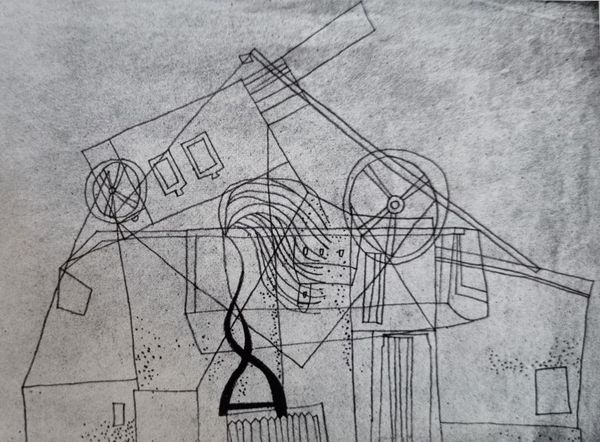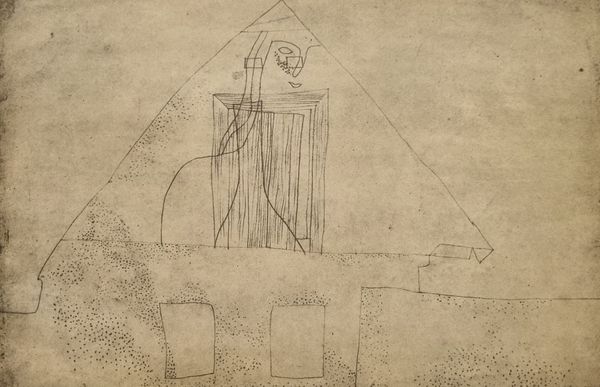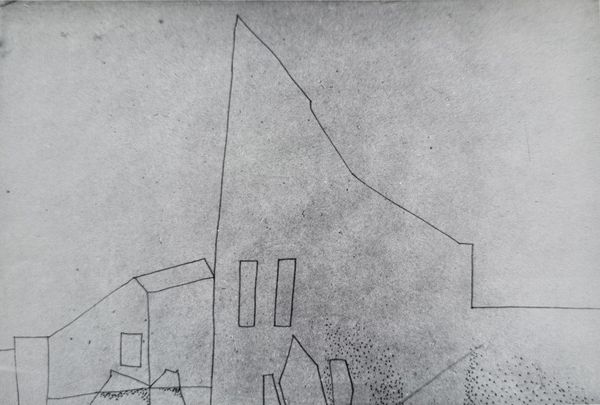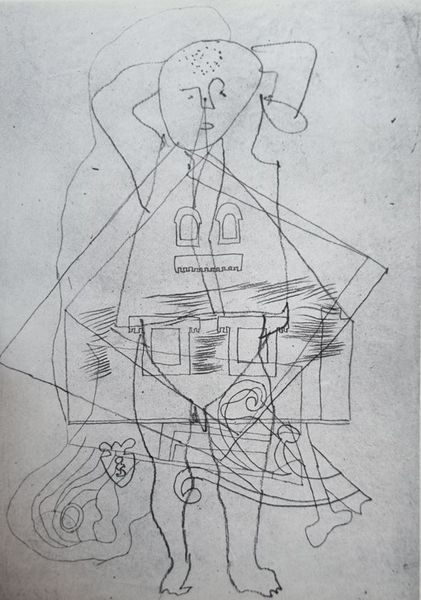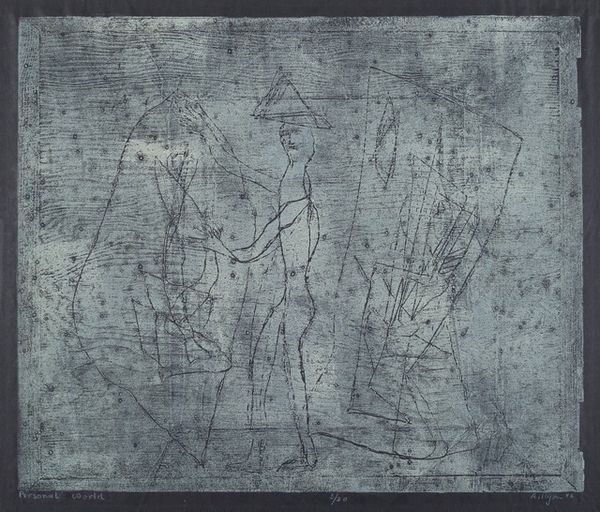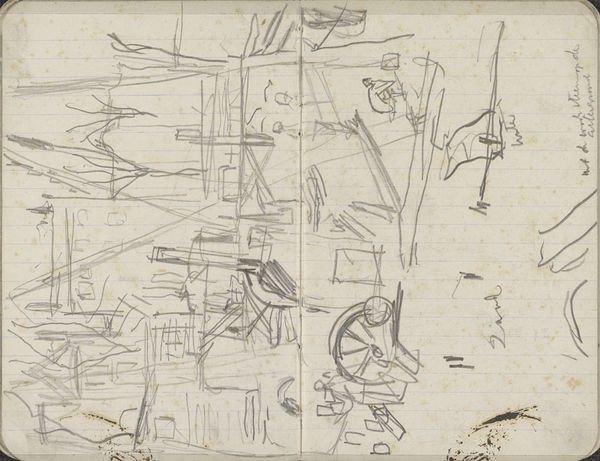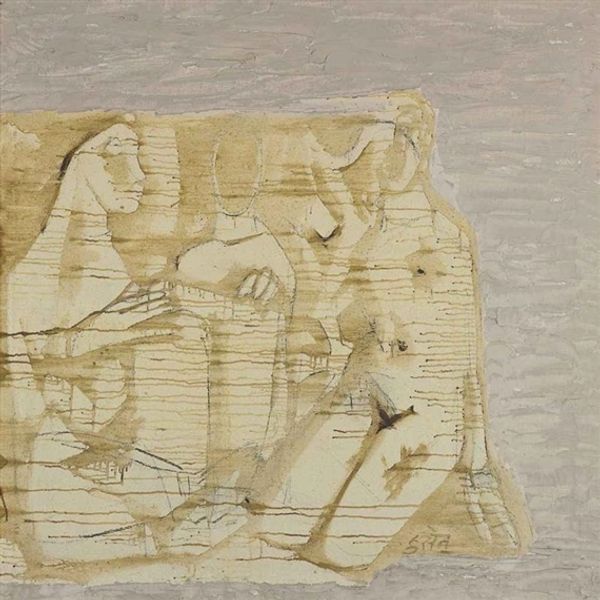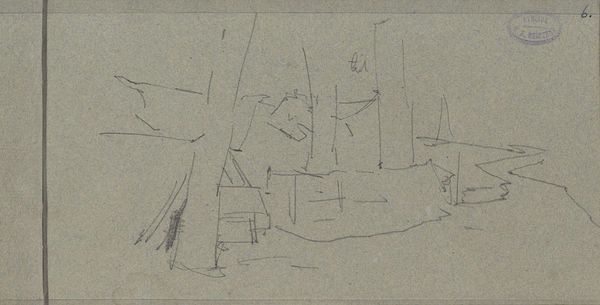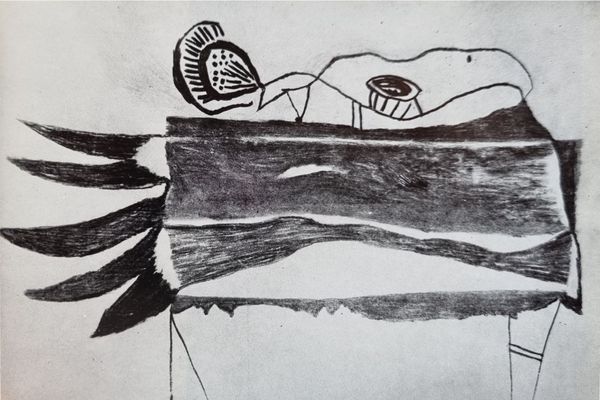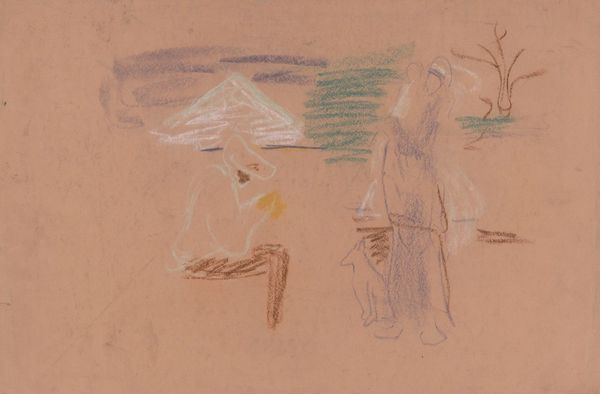
drawing, paper, ink
#
drawing
#
cubism
#
paper
#
form
#
ink
#
geometric-abstraction
#
abstraction
#
line
#
cityscape
Copyright: Public domain
Vajda Lajos created this drawing, titled ‘Houses Above’, in 1937. It’s an intriguing image, isn’t it? Its simple lines belie a deeper complexity, reflecting the turbulent socio-political atmosphere of Europe in the late 1930s. Lajos, a Hungarian Jewish artist, was working against the backdrop of rising fascism and antisemitism, which would eventually lead to his tragic death in a concentration camp. The drawing's dreamlike quality, with its floating figures and distorted architecture, seems to speak to the instability and uncertainty of the time. The houses themselves, rendered in stark lines, could be interpreted as symbols of a fragile society under threat. The ambiguous figure looming overhead could represent either a harbinger of doom or perhaps a symbol of hope, hovering protectively above. Understanding the historical context allows us to consider the drawing not just as a formal exercise, but as a powerful commentary on a world on the brink of destruction. Researching the cultural history of Hungary, and institutional records regarding the persecution of Jewish artists might shed further light on this artwork's significance.
Comments
No comments
Be the first to comment and join the conversation on the ultimate creative platform.
